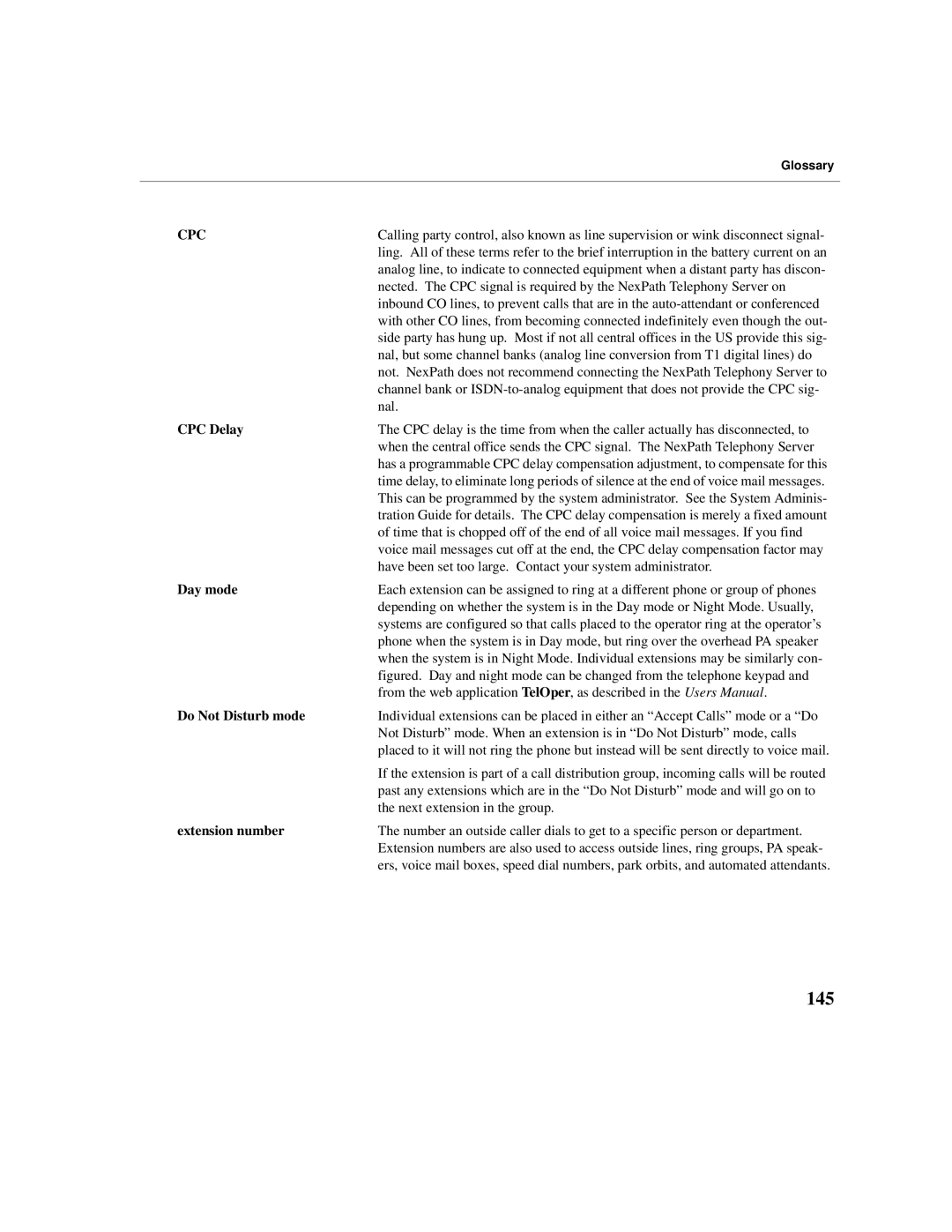| Glossary |
|
|
CPC | Calling party control, also known as line supervision or wink disconnect signal- |
| ling. All of these terms refer to the brief interruption in the battery current on an |
| analog line, to indicate to connected equipment when a distant party has discon- |
| nected. The CPC signal is required by the NexPath Telephony Server on |
| inbound CO lines, to prevent calls that are in the |
| with other CO lines, from becoming connected indefinitely even though the out- |
| side party has hung up. Most if not all central offices in the US provide this sig- |
| nal, but some channel banks (analog line conversion from T1 digital lines) do |
| not. NexPath does not recommend connecting the NexPath Telephony Server to |
| channel bank or |
| nal. |
CPC Delay | The CPC delay is the time from when the caller actually has disconnected, to |
| when the central office sends the CPC signal. The NexPath Telephony Server |
| has a programmable CPC delay compensation adjustment, to compensate for this |
| time delay, to eliminate long periods of silence at the end of voice mail messages. |
| This can be programmed by the system administrator. See the System Adminis- |
| tration Guide for details. The CPC delay compensation is merely a fixed amount |
| of time that is chopped off of the end of all voice mail messages. If you find |
| voice mail messages cut off at the end, the CPC delay compensation factor may |
| have been set too large. Contact your system administrator. |
Day mode | Each extension can be assigned to ring at a different phone or group of phones |
| depending on whether the system is in the Day mode or Night Mode. Usually, |
| systems are configured so that calls placed to the operator ring at the operator’s |
| phone when the system is in Day mode, but ring over the overhead PA speaker |
| when the system is in Night Mode. Individual extensions may be similarly con- |
| figured. Day and night mode can be changed from the telephone keypad and |
| from the web application TelOper, as described in the Users Manual. |
Do Not Disturb mode | Individual extensions can be placed in either an “Accept Calls” mode or a “Do |
| Not Disturb” mode. When an extension is in “Do Not Disturb” mode, calls |
| placed to it will not ring the phone but instead will be sent directly to voice mail. |
| If the extension is part of a call distribution group, incoming calls will be routed |
| past any extensions which are in the “Do Not Disturb” mode and will go on to |
| the next extension in the group. |
extension number | The number an outside caller dials to get to a specific person or department. |
| Extension numbers are also used to access outside lines, ring groups, PA speak- |
| ers, voice mail boxes, speed dial numbers, park orbits, and automated attendants. |
Page 155
Image 155
